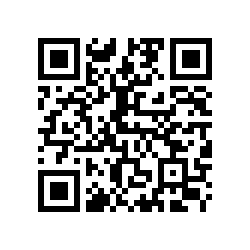Analisis Performa Metode Perceptual Color Transfer Dalam Peningkatan Kualitas Citra
(1) Universitas Kristen Immanuel Yogyakarta, Indonesia
(2) Universitas Kristen Immanuel Yogyakarta, Indonesia
(3) Universitas Kristen Immanuel Yogyakarta, Indonesia
(*) Corresponding Author
Abstract
Full Text:
PDFReferences
R. A. Cepeda-Negrete, J., Sanchez-Yanez, R. E., Correa-Tome, F. E., & Lizarraga-Morales, “Ro of of,” Dark image Enhanc. using Percept. Color Transf., vol. 5, no. IEEE Access, pp. 1–1, 2017, doi: https://n2t.net/ark:/13683/pa8v/sVM Esta.
C. Gu, X. Lu, and C. Zhang, “Example-based color transfer with Gaussian mixture modeling,” Pattern Recognit., vol. 129, pp. 1–9, 2022, doi: 10.1016/j.patcog.2022.108716.
P. boedi dessyanto yanu f. mangaras, yuwono bambang, dasar pengolahan citra digital edisi 2022, vol. 11, no. 1. 2022.
K. M. Suliestiyanti S.R., Setyawan FX ., “Pengolahan Citra Dasar Dan Contoh Penerapannya,” in Teknosain, vol. 11, no. 1, 2016, pp. 1–5.
D. Kotovenko, A. Sanakoyeu, P. Ma, S. Lang, and B. Ommer, “A content transformation block for image style transfer,” Proc. IEEE Comput. Soc. Conf. Comput. Vis. Pattern Recognit., vol. 2019-June, pp. 10024–10033, 2019, doi: 10.1109/CVPR.2019.01027.
M. He, J. Liao, D. Chen, L. Yuan, and P. V. Sander, “Progressive color transfer with dense semantic correspondences,” ACM Trans. Graph., vol. 38, no. 2, 2019, doi: 10.1145/3292482.
C. O. Ancuti, C. Ancuti, C. De Vleeschouwer, and M. Sbetr, “Color Channel Transfer for Image Dehazing,” IEEE Signal Process. Lett., vol. 26, no. 9, pp. 1413–1417, 2019, doi: 10.1109/lsp.2019.2932189.
E. Reinhard, M. Ashikhmin, B. Gooch, and P. Shirley, “Color transfer between images,” IEEE Comput. Graph. Appl., vol. 21, no. 5, pp. 34–41, 2001, doi: 10.1109/38.946629.
C. Ruderman, D.L.,Cronin, T.W., chiao, “Statistics of cone responses to natural images: impilcations for visual coding.,” J. Opt. Soc. Am. Opt. Image Sci. Vis., vol. 15, no. 2036–2045, 1998.
A. Usman, Pengolahan Citra Digital dan Teknik Pemrogramannya, Pertama. Yogyakarta: Graha Ilmu, 2005.
DOI: https://doi.org/10.30645/kesatria.v5i3.420
DOI (PDF): https://doi.org/10.30645/kesatria.v5i3.420.g416
Refbacks
- There are currently no refbacks.
Published Papers Indexed/Abstracted By:














